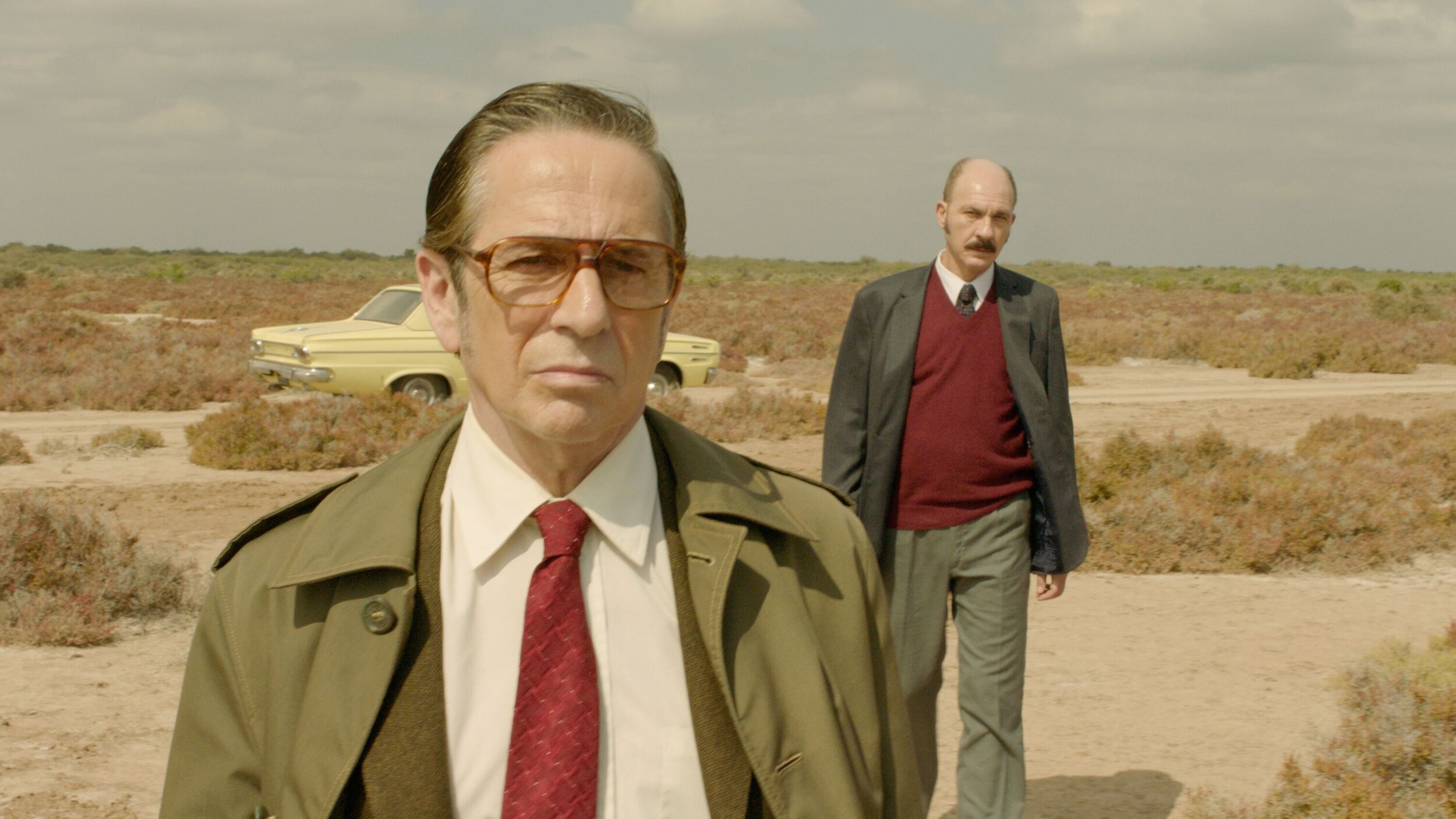Review by Reid Ramsey
A stranger wanders into town. He finds himself in a popular restaurant, hungry and without a table. After spotting Claudio (Dario Grandinetti), a lawyer sitting all alone and not yet ordering food, the stranger demands Claudio give up his table to someone who is ready to eat. Claudio reluctantly gives up his seat. Moments later, the stranger erupts in a rage and the restaurant employees ask him to leave.
This charged opening of Benjamìn Naishtat’s newest film Rojo becomes more explosive only moments later, when the stranger accosts Claudio and his wife in the street. The altercation leads to a body which leads to a cover-up – all in the opening twenty minutes. From there the story jumps forward three months as Claudio must reckon with his own moral shortcomings all while hiding his sins from everyone he loves.
Rojo, Naishtat’s third feature, takes place in 1970s Argentina in the midst of the Argentine coup and the ensuing Dirty War that would wage throughout the 70s with the support of the U.S. government; throughout this period, reportedly 30,000 citizens disappeared. Those who disappeared were primarily younger people — often communist or socialist — who opposed the military regime. Similarly to last year’s Roma, Naishtat’s film attempts to understand the passive evil perpetrated by those who witness such acts and choose not to act – and Rojo presents this idea much more deftly than Cuaron’s film.
The title sequence for Rojo features the street view of a nice looking house as people continually enter and exit carrying different objects. Only later is it apparent that this house belonged to a family who disappeared and those entering and exiting were looting the abandoned house for what was left. This matter-of-fact shot is a perfect crystallization of the banal evil at play during this period.
The opening crime haunts every moment that follows in the movie. Claudio does not kill the stranger; the stranger shoots himself in an act of desperation. Yet when Claudio has the opportunity to take the dying man to the hospital, which is what he tells his wife he will do, he instead takes him to the desert and leaves him to die. The lovely shot that closes this segment shows Claudio’s car from the rear with the door open. It is positioned against a landscape that seems at once immediate and a million miles away. Claudio returns to his car after disposing of the body and drives off. In this moment he unambiguously chooses to have only his individual interests at heart. When he could have helped another hurting person, he opts to turn a blind eye and let the dying man quietly die.
While Claudio is unflinching in his decision making, he is nonetheless haunted by this act throughout the remainder of the movie. The plotting of Rojo is rather sprawling, and after the hyper focused opening, it spirals into a scheme to profit from an abandoned house, tennis, dance performances, and some American cowboys. Yet always looming over these events is the unmentioned image of the rotting corpse in the desert.
Due to its broad and occasionally unwieldy plot, Rojo works best through its metaphors. Often the movie feels like an increasingly shrinking net, catching any and everything it can and zeroing in on our morally compromised protagonist. Also, the unexplainable and anarchic actions by the stranger in the opening act — including shooting himself — lend a strong thematic throughline for those Argentine citizens who disappeared solely because they refused to go along with life normally after the dictatorship was installed.
Naishtat distances us from the violence to dazzling thematic effect. The only scenes involving blood are shot in very lowlight. The violent scenes themselves are much like the landscape, seemingly a million miles away, but regardless of the level of apathy entertained by Claudio, he’s only a few steps away from dumping a corpse in the desert. The movie brilliantly never shows us the disposal of the body, yet again distancing the violence and also foregrounding the act of disappearance. This notion is highlighted later when Claudio returns to the desert with another character. The viewer experiences both the constant fear of running straight into the corpse and also the brutal acceptance that the stranger has truly disappeared forever.
Rojo, although maybe lacking a precise narrative focus, has a wisdom to it that when paired with historical context forms a thriller truly bent on eliciting a deep shudder from audiences. It has the moral confidence of an Asghar Farhadi movie with some of the narrative ambiguity of an Arnaud Desplechin film. Even if the threads don’t always tie back together, it is a deeply satisfying experience that would immensely reward rewatches.
Rojo is now available to stream on Amazon Prime Video.


